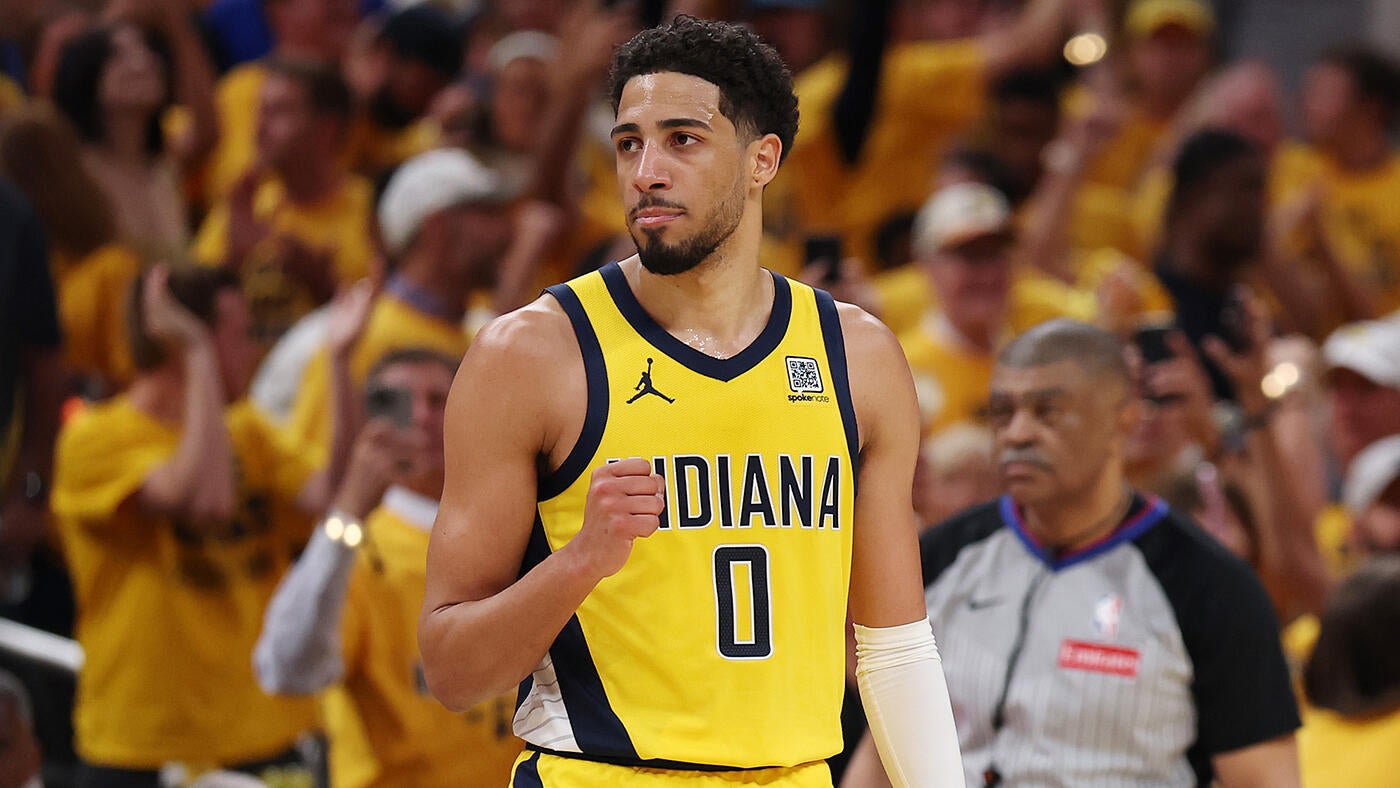
In the modern NBA where a team’s “point guard” is often just their best scorer, Tyrese Haliburton is a throwback to what the position has traditionally been. He is the ultimate pass-first player, so much so that he threw more passes (5,453) than anyone else in the league this season.
Haliburton’s vision and ability to set up his teammates is largely unmatched. During his three full seasons with the Pacers, he has never finished worst than third in the league in assists. This season, only Trae Young and Nikola Jokić created more points with their assists than Haliburton.
The paradox is that for as brilliant as Haliburton is as a playmaker, the Pacers are much better when he’s aggressive about looking for his own shot. He did not do that in the team’s blowout loss to the Oklahoma City Thunder in Game 2 of the 2025 NBA Finals, when he had just five points on seven field goal attempts through three quarters.
After that defeat, Pacers coach Rick Carlisle said there’s “more to the game than just scoring” and that people “shouldn’t just look at [Haliburton’s] points and assists.” He also said that “everybody’s gotta do more,” and that it started with Haliburton.
Haliburton took those words to heart.
In the Pacers’ 116-107 Game 3 victory on Wednesday, Haliburton put together his best all-around performance of the Finals thus far: 22 points, nine rebounds and 11 assists on 9 of 17 from the field, including 4 of 8 from 3-point range.
“Terrific,” Carlisle said of Haliburton’s effort. “I thought his approach tonight was exactly what it needed to be: a combination of spatial awareness and aggression. And a real good feel for aggression to score along with getting his teammates involved at the right times. He was terrific.”
It took nearly six minutes for Haliburton to take a shot in Game 3, but from the first possession it was clear his mindset was different.
After taking a handoff from Andrew Nembhard, Haliburton dribbled into a high screen from Myles Turner and found himself open at the top of the key, but well behind the 3-point line. He pump-faked, and Luguentz Dort, who has been harassing him all series, jumped. Haliburton gave the ball up to Turner, then sprinted straight into a handoff, took the ball back and got downhill because Dort was still trying to recover. Haliburton drew multiple defenders and created what should have been an open 3-pointer for Nembhard in the corner. Only a remarkable recovery by Cason Wallace prevented that.
Haliburton didn’t shoot and the Pacers didn’t score, but it was a successful possession because it showed what his aggression could open up for the offense.
His first assist was a similar story. Haliburton raced into a handoff with Obi Toppin and pulled up like he was going to take a mid-range jumper, drawing multiple Thunder defenders in the process. Once in midair, he kicked it out to Ben Sheppard instead, and the second year guard pump-faked his way into a wide open 15-footer.
Haliburton actually had multiple assists where he jumped in the air as if to shoot, only to pass off to an open teammate after the defense committed.
All night long, his willingness to look for his own offense when the opportunity presented itself created good possessions for the Pacers. He pulled up for floaters when he got into the middle of the defense and let it fly from 3 when the Thunder went under on screens — including his 3-pointer with 6:42 remaining that put the Pacers in front for good.
“There was adjustments that had to be made coming into today for me and I thought I did a better job at that and I watched film again and see where I can get better,” Haliburton said. “I’m never going to be, you know, super great and shoot so many shots every game consistently. There’s going to be games where I don’t and I’ve got to be able to find the right balance between the two. But I mean, I think experience is the best way I can learn from it.”
The Pacers don’t need Haliburton to start gunning like he’s 2006 Kobe Bryant, but the numbers are clear: the more Haliburton shoots, the more they win.
In the playoffs, the Pacers are now 9-1 when Haliburton takes at least 15 shots and 5-4 when he takes fewer than that. The same trend was true in the regular season. The Pacers were 24-9 when Haliburton had 15-plus shots and 22-18 when he was below that number.
Notably, Haliburton’s assist numbers rise in correlation to his field goal attempts. During the playoffs, he’s averaging 11 assists in games when he has 15-plus shots and 7.7 assists in games where he has fewer than 15 shots.
Haliburton’s first instinct is always going to be to pass the ball and get his teammates involved. But the irony is that it’s easier for him to do that when the defense is worried he might shoot instead.







